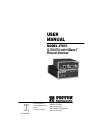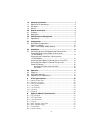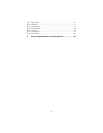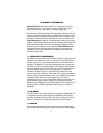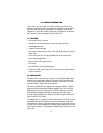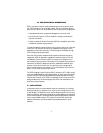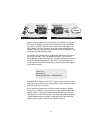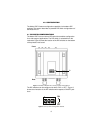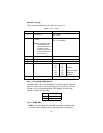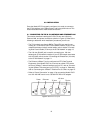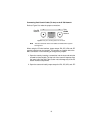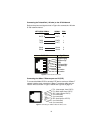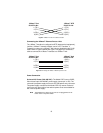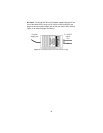7
3.0 PPP OPERATIONAL BACKGROUND
PPP is a protocol used for multi-plexed transport over a point-to-point
link. PPP operates on all full duplex media, and is a symmetric peer-to-
peer protocol, which can be divided into the following main components:
• A standard method to encapsulate datagrams over serial links
• A Link Control Protocol (LCP) to establish, configure, and test the
data-link connection
• A family of Network Control Protocols (NCPs) to establish and config-
ure different network layer protocols
In order to establish communications over a point-to-point link, each end
of the PPP link must first announce its capabilities and agree on the
parameters of the link’s operation. This exchange is facilitated through
LCP Configure-Request packets.
Once the link has been established and optional facilities have been
negotiated, PPP will attempt to establish a network protocol. PPP will
use Network Control Protocol (NCP) to choose and configure one or
more network layer protocols. Once each of the network layer protocols
have been configured, datagrams from the established network layer
protocol can be sent over the link. The link will remain configured for
these communications until explicit LCP or NCP packets close the link
down, or until some external event occurs.
The PPP Bridging Control Protocol (BCP), defined in RFC 1638, config-
ures and enables/disables the bridge protocol on both ends of the point-
to-point link. BCP uses the same packet exchange mechanism as the
Link Control Protocol (LCP). BCP is a Network Control Protocol of PPP,
bridge packets may not be exchanged until PPP has reached the net-
work layer protocol phase.
3.1 APPLICATIONS
In situations where a routed network requires connectivity to a remote
Ethernet network, the interface on a router can be configured as a PPP
IP Half Bridge. The WAN line to the remote bridge functions as a Virtual
Ethernet interface, effectively extending the routers WAN port connection
to the remote network. The bridge device sends bridge packets (BPDU’s)
to the router’s WAN interface. The router will receive the layer three
address information and will forward these packets based on its IP
address.



